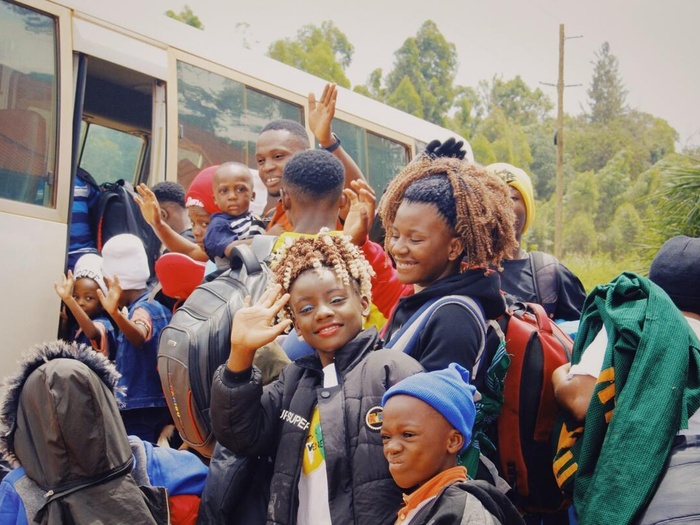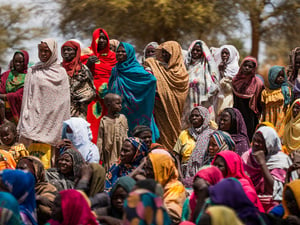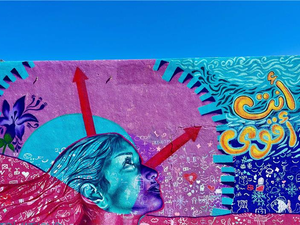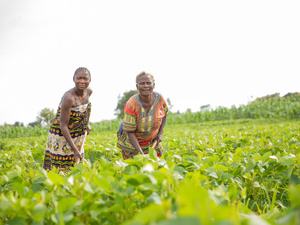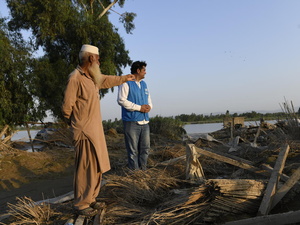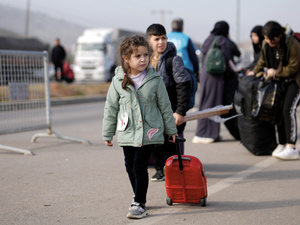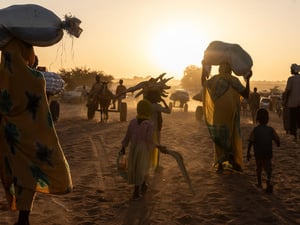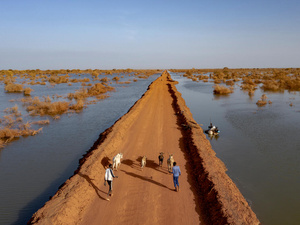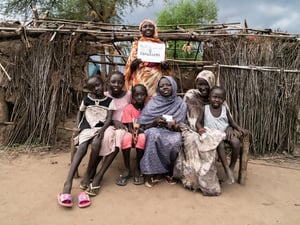2026 Projected Global Resettlement Needs (PGRN)
2026 Projected Global Resettlement Needs (PGRN)
Through the PGRN, UNHCR estimates the number of refugees who require resettlement in the following year.

Newly arrived Sudanese refugees are seen in the border town of Adre, in Chad. More than 700,000 refugees fleeing the violence in Sudan have crossed into Chad since the conflict began in April 2023.
Global refugee resettlement needs are projected to decrease in 2026, from 2.9 million to 2.5 million. This notable shift reflects changing conditions and evolving situations in different regions around the world.
One of the most important changes is in the Middle East and North Africa (MENA) region and Türkiye, where resettlement needs have declined substantially, due to the situation in Syria. While many are now able to return home, nearly 443,000 Syrians still require resettlement, making them the second largest group in need. In contrast, resettlement needs for Afghans – now the largest refugee population in need of resettlement – along with South Sudanese, Sudanese, Rohingya and Congolese (DRC) refugees have all increased. The needs of Sudanese refugees, in particular, have risen by 30 per cent, driven by ongoing displacement into neighbouring countries in West and Central Africa, the Eastern Horn of Africa and the Great Lakes as well as the MENA region.
In 2026, Iran is expected to have the largest resettlement needs. Notable increases are also seen in Pakistan, Chad, Bangladesh and Uganda.
PGRN 2026 figures at a glance
Resettlement needs by region
10 countries with highest resettlement needs, by country of asylum
10 countries with highest resettlement needs, by country of origin
“Behind these stark numbers are real people who face the severe risks in the countries where they have sought refuge. Resettlement offers safety to refugees with serious protection needs, breaks the cycle of displacement for future generations and eases the pressure of countries hosting large refugee populations.”
Global resettlement needs vastly outpace available opportunities
Global resettlement needs vastly outpace available opportunities
The year 2024 marked an unprecedented milestone in global refugee resettlement. Through the concerted efforts of 21 countries, more than 116,000 refugees were given the opportunity to find safety and rebuild their lives through resettlement. For the first time since the adoption of the resettlement departure targets set in the Third Country Solutions for Refugees: Roadmap 2030, the annual resettlement target has been surpassed.
This figure represents a testament of what is possible through collective international action. However, when compared with the immense global needs, it becomes clear that resettlement remains available to only a tiny fraction of refugees in need. In 2024, fewer than 5% of refugees who were in need of resettlement managed to start their life in a third country through UNHCR-assisted resettlement. In 2025, resettlement quotas are expected to be the lowest since 2003, falling below the levels seen even during the COVID-19 pandemic. This dramatic decline risks reversing the significant progress made in recent years, while also exposing refugee lives to danger. Meanwhile, resettlement needs have surged by 32% over the past two decades.
UNHCR’s current funding constraints limit its ability to be as responsive and flexible as in the past, exacerbating the challenges posed by lower quotas. Depending on the places made available by resettlement countries, arrangements like rotating priorities will be needed to ensure that needs are addressed as impactfully and efficiently as possible.
Resettlement: A life-saving solution and a strategic tool to manage displacement
For refugees with acute protection needs, resettlement is much more than a relocation: it is an access to safety, and an opportunity to restore dignity, pursue their dreams and regain a sense of stability. Resettled refugees make invaluable contributions to their new homes and give back to the communities that welcome them.
Resettlement can also serve strategic interests. When integrated into foreign policy and development aid, it can strengthen partnerships with host countries, complementing other forms of third country engagement. In particular, resettlement can:
- Contribute to strategies like the route-based approach, for example along the West Atlantic route to Europe, by offering third-country solutions closer to refugees’ regions of origin, like in Chad, in coordination with other efforts. Where available, resettlement and complementary pathways provide a real alternative to dangerous journeys and the use of smuggling networks.
- Help preserve fragile protection spaces and support access to territory, such as in Indonesia, one of the only countries in Asia-Pacific to consistently provide rescue at sea and allow safe disembarkation for Rohingya refugees.
- Improve inclusion prospects for those remaining in asylum countries, for instance in Lebanon which is still hosting large numbers of Syrian refugees, many of whom will not be able to return to Syria in the foreseeable future.
- Showcase international solidarity with countries grappling with economic challenges and hosting large refugee populations. This allows for a more sustainable use of resources to address food insecurity and other basic needs among the broader population.
- Foster collaboration with host countries. For instance, in the Americas UNHCR has been supporting national authorities to improve asylum procedures, accelerate case processing and promote local integration.
Key asks
More resettlement places and departures
For 2026, the international community set itself the goal to resettle 120,000 refugees. History shows that this is achievable. While larger resettlement quotas remain crucial, smaller quotas are as important, especially if cases can be quickly processed and reviewed remotely.
Strong coordination with UNHCR
In a changing landscape with fewer resources, we ask States to collaborate with UNHCR when fixing priorities and to allow for adaptable resettlement quotas allocations along key routes.
Adequate resources for resettlement systems
Sustaining resettlement requires preserving expertise, systems and sharing them. It depends on coordination, thorough vetting and support from registration through integration, with continued investment in key areas like refugee status determination, child protection and integrity.
Exploring comprehensive approaches
Adopting comprehensive approaches that make integration easier and exploring more tailored programmes such as humanitarian pathways can strengthen resettlement.

